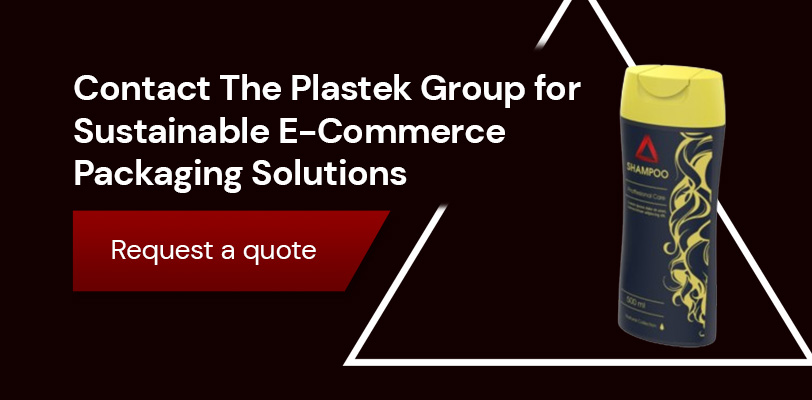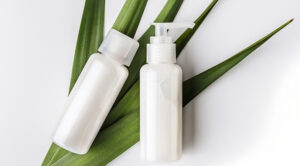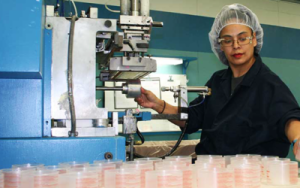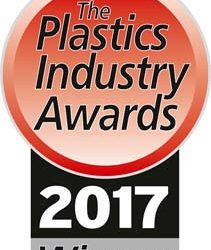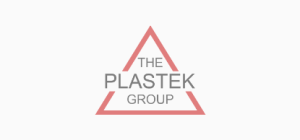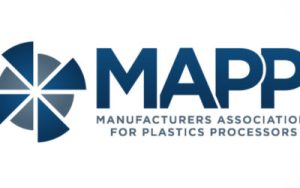According to a Business of Sustainability Index report, 80% of consumers prefer to buy from environmentally friendly companies. At the same time, statistics show that e-commerce sales in the United States have grown steadily over the past several years. As an e-commerce business, you may be at a great advantage if you switch to eco-friendly e-commerce packaging.
This guide explores the most important considerations when designing sustainable packaging, from durability and design to the best eco-friendly materials and reusable options available.
What Is Sustainable E-Commerce Packaging?
Sustainable e-commerce packaging is packaging made from renewable or recycled materials and can often be recycled, biodegraded, or composted again at the end of its lifecycle. This packaging often has less plastic, allowing it to make a smaller environmental impact. Any plastic that’s used is usually bioplastic, which is plastic that is biodegradable or recyclable.
Eventually, recycled and reused plastic will reach their useability limits. In recent years, some companies have begun using technology that easily separates recycled plastic in good condition from recycled plastic near the end of its life cycle. The technology does so through fluorescent marker technology, which uses UV light waves to identify and sort material and distinguish food-grade polymers from non-food-grade materials.
As innovations continue to emerge, sustainable e-commerce packaging proves to be a reliable and effective option for many companies.
Creating Sustainable Packaging Solutions for E-Commerce
Here are several factors to consider when designing eco-friendly product packaging for your unique e-commerce applications.
Eco-Friendly Materials
When choosing between different packaging options, you’ll want to pay close attention to their materials. Using reusable or refillable materials will help you reduce the overall demand for virgin materials. It also allows you to use materials that are already in circulation.
These are some categories of reusable and refillable materials:
- Rework: This is packaging made from defective products or packaging.
- Post-consumer resin (PCR): PCR is plastic that is collected, cleaned, and repelletized for use in new plastic packaging after it has already been used for another product.
- Post-industrial resin (PIR): PIR is the leftover plastic waste or resin from industrial or manufacturing processes that is later reused to create a new product or packaging.
A smart way to ensure you mostly use sustainable materials is by working with a packaging manufacturing company that primarily uses PCR or recycled and compostable materials to produce quality packaging.
Packaging Size
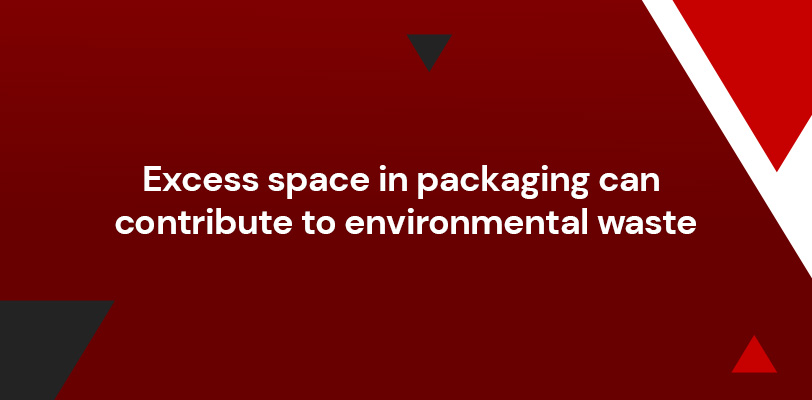
It’s important to remember that excess space in packaging can contribute to environmental waste in addition to negatively impacting the shipment of your products. Be sure to select packaging that provides just enough space for the packaging’s contents. This decision will also allow you to fit more products into a single shipping container, allowing you to make fewer shipments and reducing travel emissions in the process.
Appearance
Keep in mind that with recycled plastics, you may be unable to get the perfect color sometimes. For example, materials that were originally white might become an off-white color once recycled. Adding colorants to the recycled packaging product can help you achieve a more similar color to what you envision.
Quality
One of the most important parts of creating sustainable packaging is working with a designer and supplier that produces high-quality options. While sustainability is important, so is ensuring the product packaging meets performance requirements. Whether you require a sustainable jar, bottle, or container, the packaging must be durable, functional, and secure. This is particularly important for e-commerce businesses where the product travels a long way before reaching its recipient.
Imagine that during shipping, the continuous movement causes the product to slide up against another product. A poor-quality packaging material may not be able to withstand that constant contact. As a result, you would want to opt for a specially design packaging option that would stay closed and resist wear and tear.
For example, some designs that might work with bottle packaging include larger shoulders and smaller caps to minimize the chances of it slipping in delivery and opening on its own. It could also have an inset lid lift which requires manual effort to open the bottle. Another idea would be to protect the lid by incorporating a thick base, like a military-grade honeycomb shape, that can withstand pressure and abuse if it takes a hit from the top.
Speaking with professionals to achieve a highly resilient design for your uses is a key part of the packaging selection process.
Testing and Certification
A crucial part of the packaging creation process is testing and certifying it. Asking about a producer’s product testing methods can provide valuable insight into the level of quality you can expect.
For example, consider product packaging with flip-top closures. A trustworthy company will use special testing equipment that tests its capabilities. The Plastek Group uses equipment that automatically tests the flipping function for longer than the product’s life cycle — between 10,000 and 15,000 flexes — to ensure the packaging offers high-quality performance.
There are also options to test the packaging even further through a third-party vendor. For example, Amazon has partnered with the International Safe Transit Association as an effective way for e-commerce companies that sell on Amazon to test and certify their packaging. The Amazon drop test involves a physical performance test where they number all sides of the packaging and conduct a thorough drop test on various surface types to accurately test its durability.
Amazon now also offers the option to self-test. This means companies can test their packaging themselves, record the process and results, and fill in a few certification forms to complete the process. This is an effective option for small businesses that want to be certified without the extra cost of working with a third-party vendor.
Ultimately, working with a professional packaging company with comprehensive testing capabilities is the best way to start, and companies can pursue further testing means if preferred.
Contact The Plastek Group for Sustainable E-Commerce Packaging Solutions
With the popularity of both e-commerce and sustainability growing in recent years, now is the perfect time to move toward eco-friendly packaging and minimize your operation’s impact on the environment. Whether you want improved packaging durability, better reusable options, or eco-friendly material implementation, the experts at Plastek are ready to help you design and develop the ideal sustainable product packaging.
As a world-class plastics packaging manufacturing company, we use our expertise and knowledge across a range of industries. This includes personal care products, health and beauty, home care, pharmaceutical and nutraceutical products, and food and beverage. To learn more about our many value-added services, contact us for more information or request a quote from us today.
